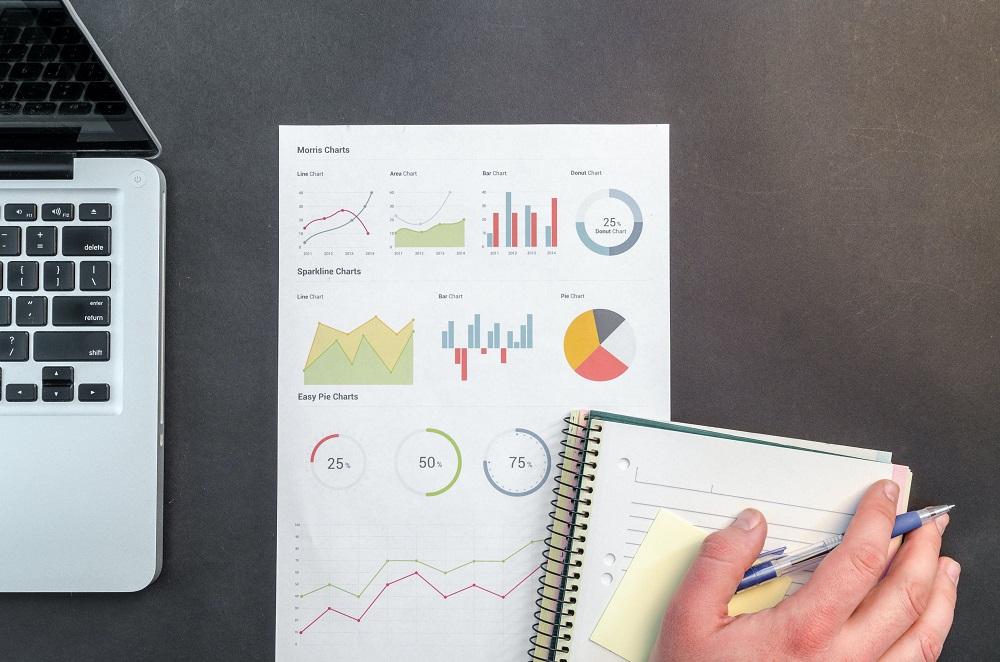
Artificial intelligence and AI-powered software are increasingly prevalent in every industry, and the sectors of business intelligence (BI) and business analytics (BA) are no exception.
AI analytics, which includes an AI-powered BI tool and machine learning-powered software, is today’s replacement for nearly 200 years of statistical modeling techniques. These new tools allow businesses to transition away from traditional data interpretation models, using newer and more efficient methods that query the data directly and without bias.
What is AI?
In plain words, artificial intelligence is harnessing the processing power of computing devices to detect patterns and solve problems in a human-like manner. Demis Hassabis, the co-founder of AI company DeepMind, described it as the “science of making machines smart.”
Today, many technologies and applications are AI-powered. When typing a text message on your mobile phone, a natural language AI powers the predictive text system that offers word suggestions. Self-driving cars use computer vision and AI-powered visual interpretation of the world to detect and avoid obstacles.
What Does AI Bring to Analytics?
Traditional, non-AI-powered data analytics rely on methods inspired by the scientific field: Form a hypothesis, manually search the data to find patterns or evidence that may support or disprove the hypothesis, then apply a potential solution.
This process can take a significant amount of time (between a few hours and several weeks) and is typically imperfect. There are only so many theories that analysts can test within a reasonable time frame. The analytics process may be biased, or it may flag issues without identifying their actual impact.
Artificial intelligence is technology purpose-designed to search data, seek patterns, and answer specific questions based on its findings. It offers an unbiased, data-driven point of view, and it takes only a few seconds to a few minutes.
Recommended: An Interview With Adam Petrilli, The Founder And CEO At NetReputation.com
The “Sales Down” Example
For example, suppose your business has identified a simple issue: “Sales are down.” The role of analytics is to find an answer to the question, “Why are sales down?”
Under the traditional format, data analysts begin by forming hypotheses in their minds based on what they believe might be the most likely reasons why sales are currently down. (e.g., “Sales are down because of bad weather,” “Sales are down because our ad campaign sends the wrong message,” or “Sales are down because our competitors released a well-received product.”)
Traditional data analysts then search through the company’s data and metrics manually, testing each hypothesis individually in search of evidence until they can build a case for it and determine whether their proposed reason is why sales are down.
This method’s main weakness is that the whole process begins with a potentially biased or flawed question, resulting in potentially incomplete, inconclusive, or irrelevant answers.
Instead of starting with a question, an AI-powered BI tool searches your data and metrics directly, starting from a data point (sales) and looking for every bit of information related to that data point. When presenting its findings, the AI tool can display information in order of importance, showing what is causing the sales to go down and to what extent.
For example, the AI tool may have discovered that two of the three hypotheses were correct (“Because of bad weather” and “Because our ad campaign sends the wrong message”). However, it determined that the bad weather was responsible for a 0.3% loss over the past month, whereas the ad campaign may have caused sales to go down by 4%.
Why AI Analytics is Essential for Business Intelligence
AI-powered business intelligence tools allow your business to use collected data efficiently. They expedite the process of data extraction and cleaning, generating potentially valuable and actionable insights within seconds. AI Analytics can be used in many industries, from retail to banking, to media and insurance.
When you need AI analytics to answer a potential question, the BI tool queries the data directly instead of assessing each hypothesis one by one. Technologies such as Natural Language Query (NLQ) and Natural Language Generation (NLG) help make AI analytics more accessible by presenting their information in plain language, making them understandable by more personnel, and eliminating the need for a dedicated data analytics department.
The Bottom Line
Today’s businesses cannot function without data, but data collection without an efficient way to use it wastes significant time and resources.
AI-powered tools enable your data teams to improve business intelligence with smart, unbiased uses of the data you already possess, improving overall efficiency and productivity.
Activate Social Media:


